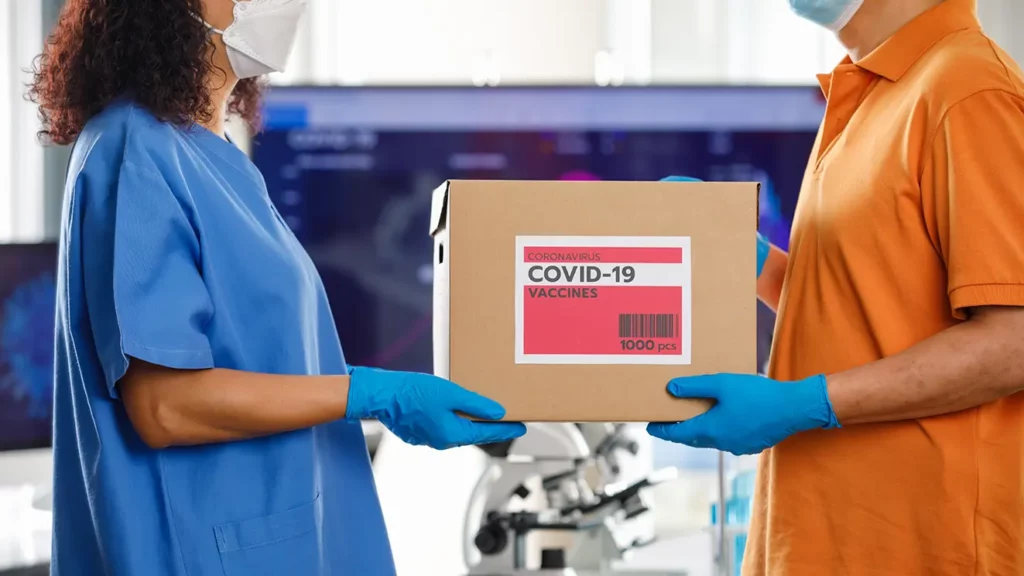At the heart of any successful pharma delivery operations is a well-run fleet – a reliable, efficient pharmaceutical delivery driver getting goods to their destinations in a timely and organized fashion.
But managing these drivers can be tricky even under normal circumstances; with increased demands on speed and efficiency, it becomes an even more significant challenge.
In this blog post, we’re going to explore how companies in the pharmaceutical delivery industry can better streamline driver operations for better performance overall.
From troubleshooting common issues to implementing cutting-edge technology solutions, you’ll have all the best practices for optimizing your deliveries at your fingertips!
Understanding Pharmaceutical Logistics and Supply Chain Management
Pharmaceutical logistics and supply chain management involve a complex set of interrelated processes that all aim to ensure medications, medical devices, and other healthcare-related products reach their intended consumers where and when they need them.
It’s important to understand pharmaceutical logistics if companies want to remain competitive in the industry, increase efficiency, improve customer service, and reduce costs.
The challenge is understanding the factors that affect the supply chain – customer orders and forecasts, production constraints, distribution networks, demand variability, and inventory management – and logistics-related activities such as warehousing, transportation, and information systems.
By analyzing data related to pharmaceuticals transportation and storage in detail, companies can make better decisions concerning today’s increasingly complex supply chain.

Common Challenges Faced in Pharmaceutical Logistics and Supply Chain Management
Inefficiencies in the supply chain
Inefficiencies in the supply chain can be a large challenge for pharmaceutical logistics and supply chain management. Too many steps, processes, warehouse locations, or transportation is often the primary source of these bottlenecks.
When stock control systems are consistently inaccurate, this also contributes to added difficulty in tracking supplies and demand.
Additionally, when suppliers are affected by crises such as pandemics or political instability, this can cause issues with the availability and delivery of necessary products. To tackle these inefficiencies, pharmaceutical companies must identify weak points in their supply chain and focus on streamlining process flows wherever possible.
Their best bet is to use advanced technologies to automate manual tasks, optimize warehouse operations, and monitor inventory lifecycles with electronic data exchange technologies at every step during production and distribution.
Mismanagement of inventory
One of the most common challenges faced in pharmaceutical logistics and supply chain management is inventory mismanagement. This can lead to significant problems, including inaccurate ordering, high storage costs, frequent stockouts, and slow order fulfillment.
Without proper inventory tracking, organizations cannot forecast customer demand accurately, leading to an imbalance between ordering too much or too little product.
Additionally, multiple stock locations mean that products may unintentionally end up in the wrong place without the right amount of visibility into goods movements. Poor inventory management can also lead to higher safety risks and compliance violations because necessary information about products may be missing when they go out for delivery.
It is important for pharmaceutical organizations to have a reliable system in place to reduce these inventory-related issues and ensure accuracy throughout the entire supply chain process.
Poor communication between parties
Poor communication between parties is a common challenge in pharmaceutical logistics and supply chain management. Communication breakdowns can lead to costly delays in the distribution of goods, resulting in dissatisfied customers who may be unable to access the medications and treatments they need.
Effective communication between various stakeholders involved in the transportation process requires strong leadership and dedication from all those involved. All stakeholders must follow international standards for privacy, efficiency, data transfer, reporting, and more to ensure that information flows clearly between them.
With proper processes, real-time updates on changes or issues can be regularly shared and responded to quickly. This way, performance failures with a pharmaceutical delivery driver can be managed effectively and avoided altogether.
Difficulty in tracking deliveries
Tracking deliveries can become a challenge for pharmaceutical logistics and supply chain management, especially with time-sensitive medications like vaccines and other treatments that require meticulous timetables.
In addition to ensuring the accuracy of deliveries and timeliness, there are many different regulations to navigate and adhere to. This is why having an experienced team in place who understands the various intricacies of this sector is essential.
Taking proactive steps such as monitoring shipment conditions, keeping manufacturers appraised, and creating checklists for each delivery are also helpful ways to reduce any issues related to tracking.
Quality control measures should be implemented from start to finish so that companies can ensure everything meets industry expectations. With these practices in place, pharmaceutical logistics and supply chain management can keep track of their deliveries more effectively.

The Role of a Pharmaceutical Delivery Driver
A pharmaceutical delivery driver plays a critical role within the healthcare industry, ensuring that important medications and medical supplies get to where they need to be prompt.
With their help, doctors and nurses can access the resources they need to provide quality care efficiently. This is essential during crises like Covid-19, where hospitals are in high demand for medical supplies and medication.
Beyond direct distribution, the pharmaceutical delivery driver may also be responsible for loading and unloading cartons of medical materials or delivering medical records.
Pharmaceutical delivery drivers are invaluable to the healthcare workforce, providing necessary services every day.
Key Features of Delivery Management Software for Pharmaceutical Logistics
Automated dispatch and route optimization
Automated dispatch and route optimization are key features of delivery management software for pharmaceutical logistics. This software makes it easier to ensure delivery accuracy, as it eliminates tedious manual log-keeping.
Machines can calculate the most effective routes for a pharmaceutical delivery driver based on geographic networks and real-time traffic updates.
Additionally, customer order history can be accessed quickly, so repeat customers receive their packages faster, while alternative pathways are accessible in case of congestion.
Optimization also helps keep track of different vehicle options depending on product size or the number of shipments, allowing more efficient utilization of infrastructure that helps cut down on costs without any compromise in customer satisfaction.
Real-time delivery tracking
Delivery management software for pharmaceutical logistics can help streamline the supply chain and reduce shipping costs by allowing companies to track deliveries in real-time.
By having access to real-time information, including exact delivery times, one can prioritize shipments, alert customers of delays due to traffic or weather events, and optimize fleets for more efficient use of resources.
With automated alerts for possible breaches in temperature requirements, companies also can ensure product safety through timely delivery tracking.
Additionally, with real-time data on deliveries, companies have a better view of customer satisfaction and can quickly address any issues.
Inventory management
Inventory management is an essential feature of delivery management software for pharmaceutical delivery logistics. It allows companies to control their supply chain better and quickly address any oversight to shipments.
Pharmaceutical companies must monitor the inventory they have at hand and plan shipment accordingly; otherwise, they can find their business unable to meet customer demand. Delivery management software’s automated inventory management capabilities allow businesses to track all inventory data in one place easily.
They can even turn to real-time analytics furnished by the software to ensure warehouse assets match buyer needs. With efficient, complete inventory control, delivery management systems enable tactical decision-making in companies that specialize in delivering pharmaceuticals.
Streamline Driver Operation With Detrack
To stay competitive and ensure patients get their life-saving medications on time, pharma companies must have a streamlined delivery process.
By utilizing the latest technology, such as real-time GPS tracking and route optimization software, pharma companies can keep track of their drivers and inventory while ensuring that deliveries are made on time—all without sacrificing patient safety or privacy.
If you’re looking to streamline your pharmaceutical delivery driver operations, Detrack can help. Our team of experts will work with you to assess your current system and find ways to improve efficiency and productivity—ensuring that your company stays ahead of the competition.










